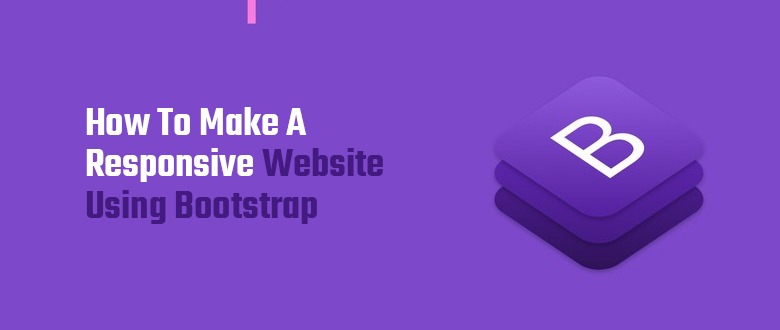
Are you looking for a website that optimizes itself, while viewing it in a mobile, laptop, iPad, or PC? Do you want your business website to rank high on search engines? Then you must get to know how to make a responsive website using Bootstrap. Now Bootstrap is a popular framework used for front-end development of a website. It’s incredible flexibility which allows one to tweak the design and layout of a website is the reason for its global outreach and usage.
With the advent of IoT (Internet of Things) building a responsive website is a core requirement. Many businesses are demanding for websites that can be visually optimized according to the screen-sizes of mobiles, notes, PC and even smart watches, offering a superior user experience and ultimately ranking high on search engines like Google, Bing, Yahoo, DuckDuckGo, Naver, Baidu etc. Any website that lacks these features gets very low rankings due to poor user-friendliness.
A responsive website means that the site can be opened on multiple screen sizes that are relevant to all kind of devices that we use daily. The ability to showcase your website to a wide variety of people with diverse devices means improved user experience.
As complicated as it sounds, one doesn’t need to be an expert. All one needs is Bootstrap which doesn’t require struggling with specific CSS Grid specifications or Flexbox.
Awesome! You are now successfully equipped with background knowledge, now let’s move ahead with the tutorial for Responsive Website Designing that provides an SEO Friendly Design.
A simple text editor and a browser are all one needs to get the website ready. However, free VPS such as Amazon Web Services or AWS can help you explore how your website design mockup will function as a real website. Go ahead and effectively check its behaviour on different systems or browsers.
First step is the basic setup that covers the viewport and initial scale. We put the code as shown below to tell the browser how we are going to build a responsive website.
<meta name=”viewport” content=”width=device-width, initial-scale=1.0">
The above code defines a Meta tag that tells the browser to set the width of the website according to the device width. It also equates to the default website.
Step 2 involves Hooking up the Bootstrap. Bootstrap libraries are linked up. All one need is to download Bootstrap to the development folder and extract it.
Next, use the following code and put it in the index.html file below the viewpoint meta tag.
<link rel=”stylesheet” href=”css/bootstrap.css”>
<link rel=”stylesheet” href=”css/bootstrap-responsive.css”>
The third step is the Building process which depends on the kind of web hosting solution one uses. Be it a dedicated or shared hosting plan, or even through one’s own in-house hosting, the princess should come out fine as long as its the same set of tools & commands.
Website building generally comprises of the following main components:
The last step is getting the content ready. This is done using the col-md-8 mb-4, col-md-4 mb-4 and so on. The Flexbox-based bootstrap grid system is highly effective for creating the content system and layout. After the significant part, it is now time to build the right sidebar. This is done by designing and listing the vertical navigation list on the sidebar. The last step is to get the footer ready. Footer provides business information or any other copyright information.
Hope this blog was an interesting read and you got to know the basics of How to make a responsive website using Bootstrap. Go DigiPro has helped many corporates, reputed companies and SMEs to boost their business by creating a responsive website using Bootstrap. With stunning visuals, vibrant designs and search engine friendly and SEO Friendly Design we are the best website creation agency in India. Get affordable and powerful Responsive Website Designing with the top web development company in India.
We are always there to help you, for any queries contact our ever responsive Email and contact number.